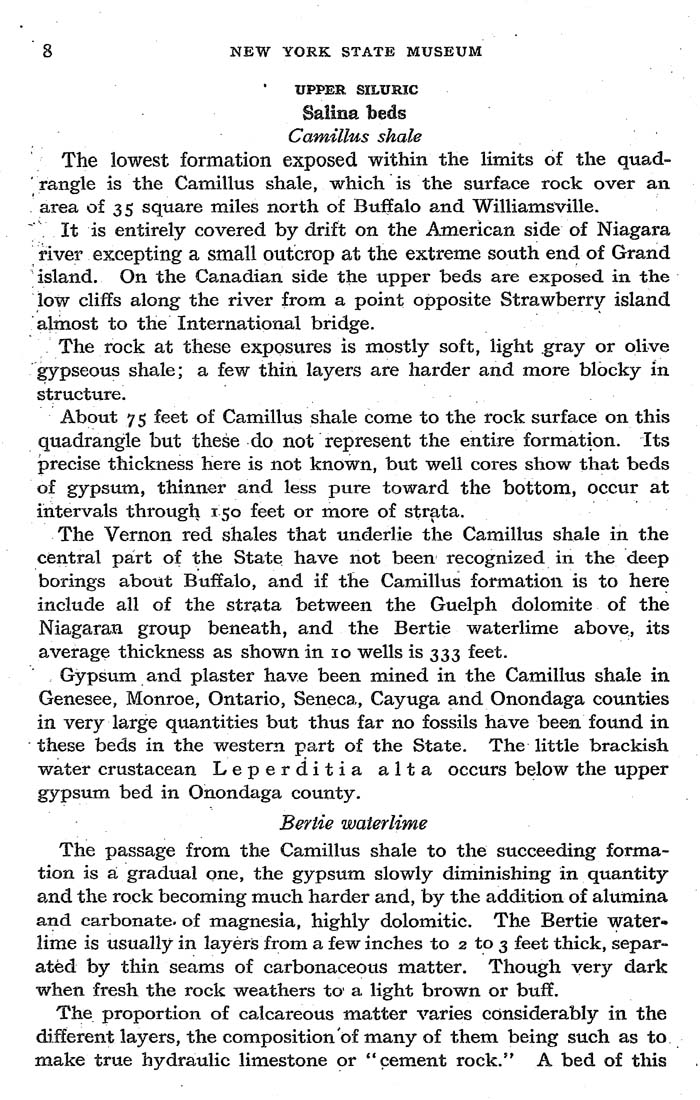8 NEW YORK STATE MUSEUM
UPPER SILURIC
Salina beds
Camillus shale
The lowest formation exposed within the limits of the quad¬
rangle is the Camillus shale, which is the surface rock over an
area of 35 square miles north of Bufelo and Williamsville.
" It is entirely covered by drift on the American side of Niagara
river excepting a small outcrop at the extreme south end of Grand
island. On the Ca^nadian side the upper beds are exposed in the
low cliffs along the river from a point opposite Strawberry island
almost to the International bridge.
The rock at these exposures is mostly soft, light gray or olive
gypseous shale; a few thin layers are harder and more blocky in
structure.
About 7 5 feet of Camillus shale come to the rock surface on this
quadrangle but these do not represent the entire formation. Its
precise thickness here is not known, but well cores show that beds
of gypsum, thinner and less pure toward the bottom, occur at
intervals through 150 feet or more of strata.
The Vernon red shales that underlie the Camillus shale in the
central part of the State have not been recognized in the deep
borings about Buffalo, and if the Camillus formation is to here
include all of the strata between the Guelph dolomite of the
Niagaran group beneath, and the Bertie waterlime above, its
average thickness as shown in 10 wells is 333 feet.
Gypsum and plaster have been mined in the Camillus shale in
Genesee, Monroe, Ontario, Seneca, Cayuga and Onondaga counties
in very large quantities but thus far no fossils have been found in
these beds in the western part of the State. The little brackish
water crustacean Leperditia alt a occurs below the upper
gypsum bed in Onondaga county.
Bertie waterlime
The passage from the Camillus shale to the succeeding forma¬
tion is a: gradual one, the gypsum slowly diminishing in quantity
and the rock becoming much harder and, by the addition of alumina
and carbonate, of magnesia, highly dolomitic. The Bertie water¬
lime is usually in layers from a few inches to 2 to 3 feet thick, separ¬
ated by thin seams of carbonaceous matter. Though very dark
when fresh the rock weathers to' a light brown or buff.
The proportion of calcareous matter varies considerably in the
different layers, the composition of many of them being such as to
make true hydraulic limestone or ** cement rock.'' A bed of this
|








